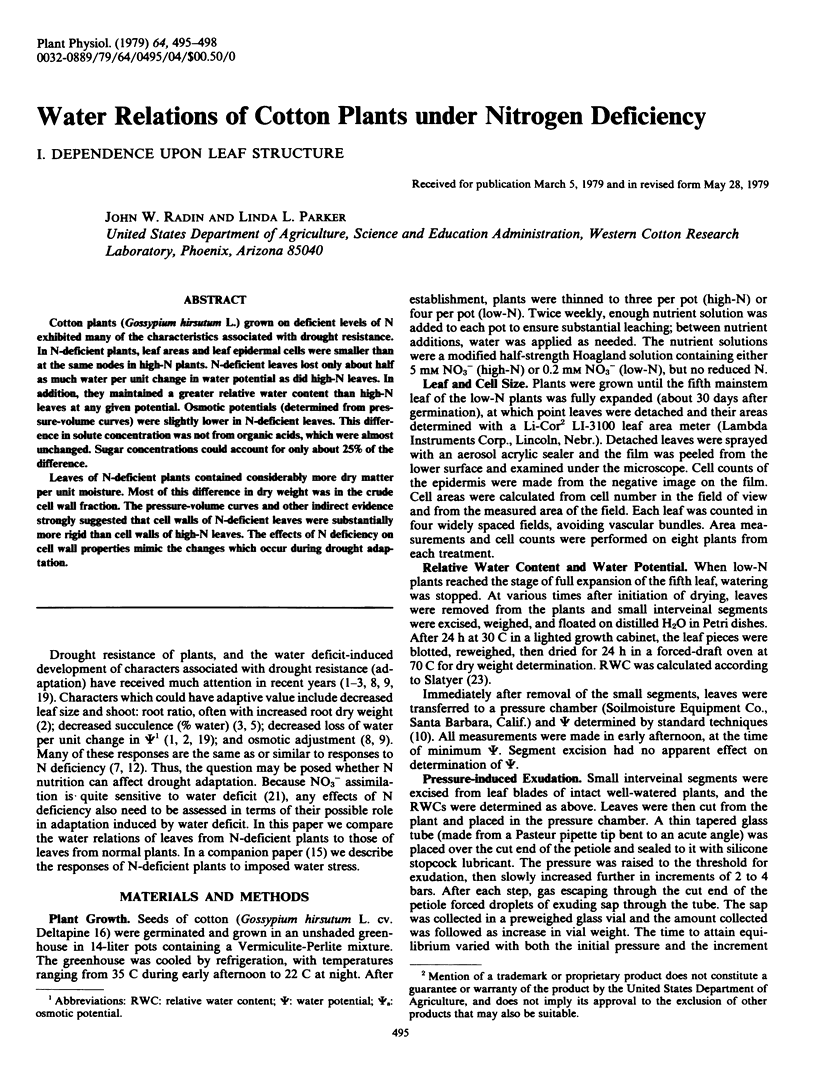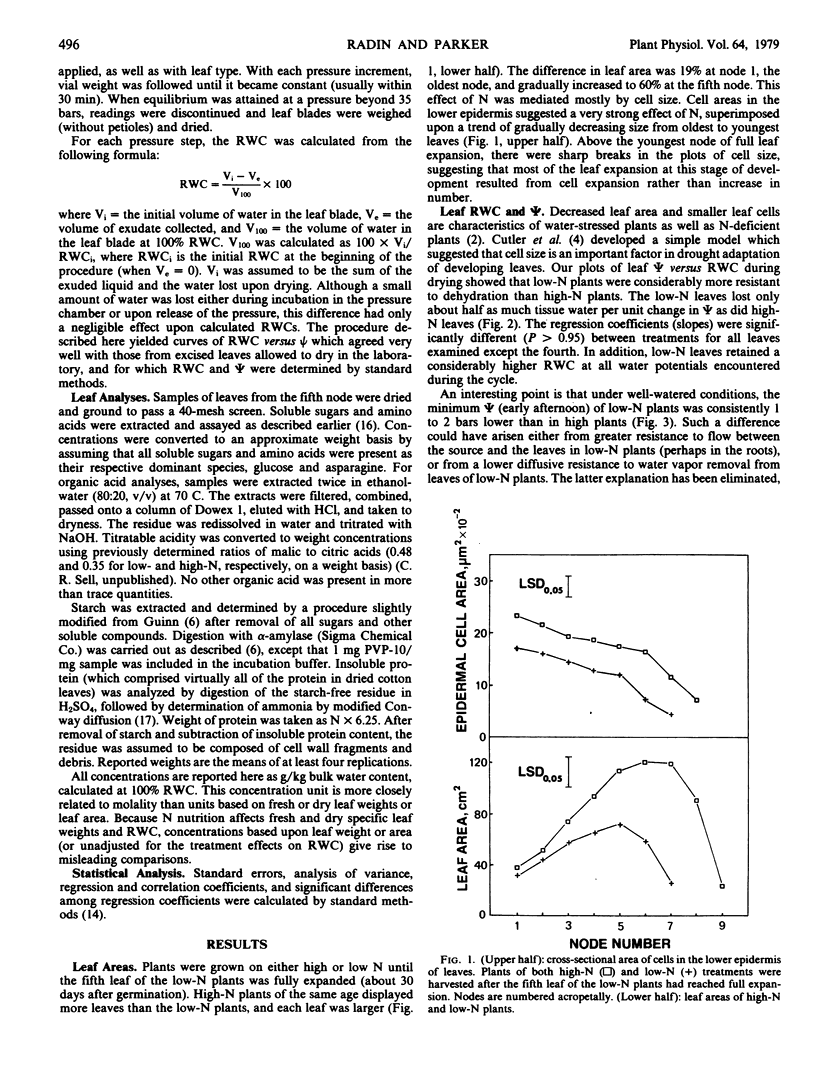Abstract
Cotton plants (Gossypium hirsutum L.) grown on deficient levels of N exhibited many of the characteristics associated with drought resistance. In N-deficient plants, leaf areas and leaf epidermal cells were smaller than at the same nodes in high-N plants. N-deficient leaves lost only about half as much water per unit change in water potential as did high-N leaves. In addition, they maintained a greater relative water content than high-N leaves at any given potential. Osmotic potentials (determined from pressure-volume curves) were slightly lower in N-deficient leaves. This difference in solute concentration was not from organic acids, which were almost unchanged. Sugar concentrations could account for only about 25% of the difference.
Leaves of N-deficient plants contained considerably more dry matter per unit moisture. Most of this difference in dry weight was in the crude cell wall fraction. The pressure-volume curves and other indirect evidence strongly suggested that cell walls of N-deficient leaves were substantially more rigid than cell walls of high-N leaves. The effects of N deficiency on cell wall properties mimic the changes which occur during drought adaptation.
Full text
PDF



Selected References
These references are in PubMed. This may not be the complete list of references from this article.
- Ergle D. R., Eaton F. M. ORGANIC ACIDS OF THE COTTON PLANT. Plant Physiol. 1949 Jul;24(3):373–388. doi: 10.1104/pp.24.3.373. [DOI] [PMC free article] [PubMed] [Google Scholar]
- Jones M. M. Osmotic adjustment in leaves of sorghum in response to water deficits. Plant Physiol. 1978 Jan;61(1):122–126. doi: 10.1104/pp.61.1.122. [DOI] [PMC free article] [PubMed] [Google Scholar]
- Jordan W. R., Ritchie J. T. Influence of soil water stress on evaporation, root absorption, and internal water status of cotton. Plant Physiol. 1971 Dec;48(6):783–788. doi: 10.1104/pp.48.6.783. [DOI] [PMC free article] [PubMed] [Google Scholar]
- Radin J. W., Parker L. L., Sell C. R. Partitioning of Sugar between Growth and Nitrate Reduction in Cotton Roots. Plant Physiol. 1978 Oct;62(4):550–553. doi: 10.1104/pp.62.4.550. [DOI] [PMC free article] [PubMed] [Google Scholar]
- Radin J. W., Parker L. L. Water Relations of Cotton Plants under Nitrogen Deficiency: II. Environmental Interactions on Stomata. Plant Physiol. 1979 Sep;64(3):499–501. doi: 10.1104/pp.64.3.499. [DOI] [PMC free article] [PubMed] [Google Scholar]
- Sanchez-Diaz M. F., Kramer P. J. Behavior of Corn and Sorghum under Water Stress and during Recovery. Plant Physiol. 1971 Nov;48(5):613–616. doi: 10.1104/pp.48.5.613. [DOI] [PMC free article] [PubMed] [Google Scholar]
- Scholander P. F., Hammel H. T., Hemmingsen E. A., Bradstreet E. D. HYDROSTATIC PRESSURE AND OSMOTIC POTENTIAL IN LEAVES OF MANGROVES AND SOME OTHER PLANTS. Proc Natl Acad Sci U S A. 1964 Jul;52(1):119–125. doi: 10.1073/pnas.52.1.119. [DOI] [PMC free article] [PubMed] [Google Scholar]
- Shaner D. L., Boyer J. S. Nitrate Reductase Activity in Maize (Zea mays L.) Leaves: II. Regulation by Nitrate Flux at Low Leaf Water Potential. Plant Physiol. 1976 Oct;58(4):505–509. doi: 10.1104/pp.58.4.505. [DOI] [PMC free article] [PubMed] [Google Scholar]


